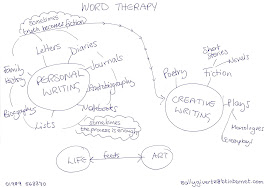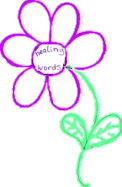As this was a short four week series we got to thinking about the symbolism of the number four. Our running themes emerged from T.S. Eliot's Four Quartets (just little snatches so our brains didn't explode); Seamus Heaney's Seeing Things (particularly the section called Squarings); Jo Shapcotts poems about quadrupeds - we all particularly enjoyed Lies which tell the Truth about Sheep. It's a joy. We also got swept away by the idea of rivers and the idea of opposites. The picture below is of a rather drunken river god. Part 3 of Four Quartets begins: I don't know much about gods; but I think that the river is a strong brown god.
I brought in a variety of objects including a bell and dorje which symbolise (among other things) the male/female aspects of being. Rather nice to think that the voice of the feminine bell is the voice of Buddhah.
A couple of responses are shown below.
The Dorje and Bell
Pauline Apperley
Man makes his presence felt
The dorje shows he is the master
Muffled sound comes from her
He rants and she listens
He bursts into the room
She hovers in the doorway
Her bell-like voice is to be heard
He clangs above her.
His and Hers
Annie Booth
bell and dorje
cup and sword
yin and yang
feminine and male
key and yale
soft and hard
give and take
make or break
early or late
all one another
sister and brother
father and mother.
This is the beginning of Lies by Jo Shapcott
In reality, sheep are brave, enlightened
and sassy. They are walking clouds
and like clouds have forgotten
how to jump. As lambs they knew.
So we can contemplate the idea that we knew a lot more useful stuff when we were young.
To end a quotation from the end of Four Quartets which has a satisfyingly oriental circularity.
We shall not cease from exploration
And the end of all our exploring
Will be to arrive where we started
And know the place for the first time.












